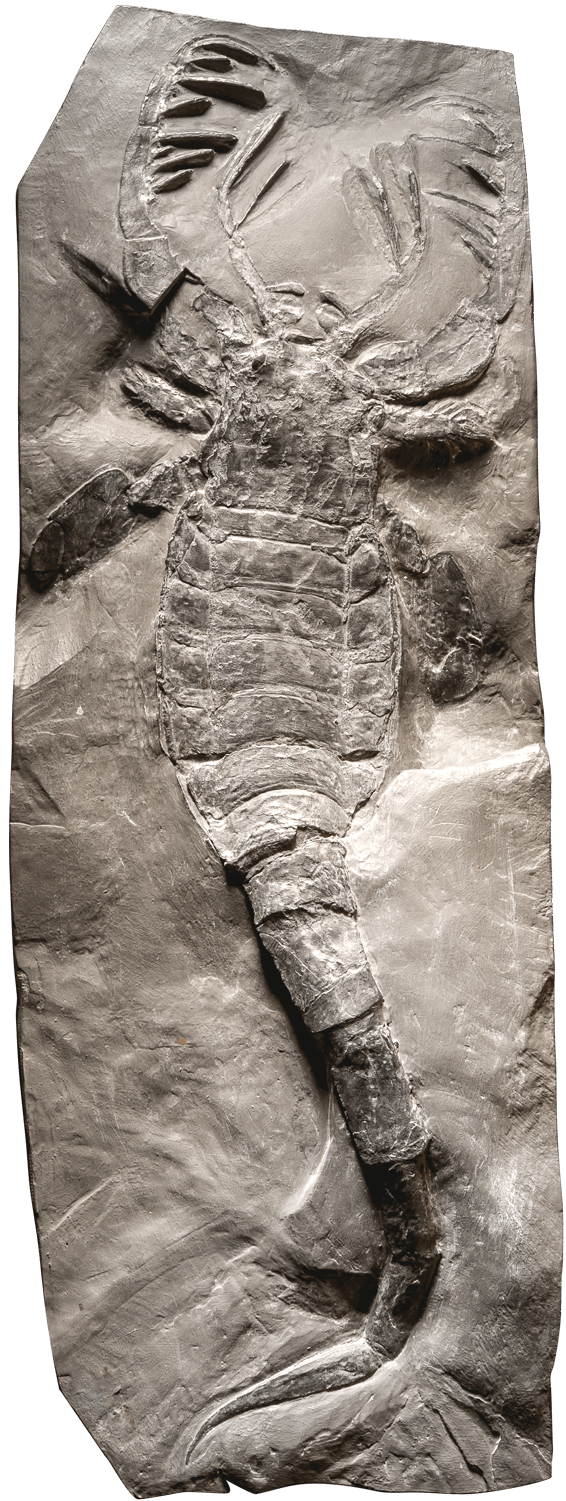A remarkable fossil
Sea scorpions were among the largest predators of the Silurian. They could be up to two metres long. The species represented here, Mixopterus kiaeri, probably lived in Swedish seas and could be up to 75 centimetres long.
Like most Silurian sea scorpions, Mixopterus lived in shoreline waters. Fossil traces indicate that it could move short distances on land.
As you can see, the front legs had many spines that were useful for catching and holding prey. The long tail had a sharp barb that may have been used for defence or for stinging prey. The animal used its broad, flat rear legs when swimming.
Sea scorpions existed for 240 million years, from the Ordovician to the Permian. They were closely related to spiders and other arachnids, and may be ancestors of modern scorpions.
The museum’s sea scorpion, which you can see in the display case in the wall behind you, is a copy of a specimen that was found in Norway.


